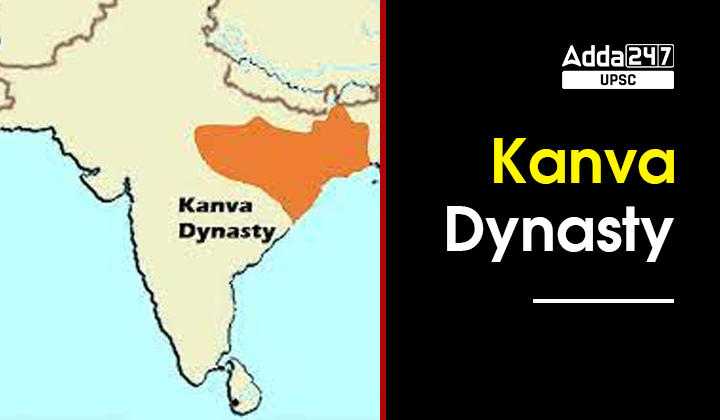Table of Contents
The Kanva Dynasty was a short-lived yet prominent ruling dynasty in ancient India. As it connected the Maurya and Shunga dynasties, it signalled a turning point in Indian history. Although the Kanva Dynasty is frequently ignored in historical texts, its impact on Indian society cannot be denied.
In this article, we will explore the history of the Kanva Dynasty, its achievements, and the reasons behind its decline.
Rise of the Kanva Dynasty
Once Brihadratha, the last Mauryan monarch, was assassinated in 73 BCE, the Kanva Dynasty took control. The assassination of Brihadratha created a political vacuum in northern India at a time when the Maurya Empire was already in decline. This provided an opportunity for the Kanva Dynasty, headed by Vasudeva Kanva, to build a new empire in Magadha.
Timeline of Rulers in the Kanva Dynasty
- Vasudeva Kanva (73 BCE – 53 BCE)
- Bhumimitra (53 BCE – 33 BCE)
- Narayana (33 BCE – 23 BCE)
- Susharman (23 BCE – 21 BCE)
- Hala (21 BCE – 1 BCE)
- Vasudeva Kanva – Founder of the Kanva Dynasty, known for his patronage of Buddhism.
- Bhumimitra – Ruled during a period of peace and prosperity, and continued the dynasty’s support for Buddhism.
- Narayana – Known for his military campaigns against foreign invaders.
- Susharman – Ruled for a short period and did not leave a significant impact on the dynasty.
- Hala – Known for his patronage of literature, particularly for the works of the poet Kalidasa.
Achievements of the Kanva Dynasty
Despite its short-lived reign, the Kanva Dynasty made significant contributions to Indian culture and society. Here are some of its achievements:
Patronage of Buddhism: The Kanva Dynasty was a strong supporter of Buddhism and helped spread the religion across India. Under the Kanva Dynasty, Buddhist monks and scholars were given royal patronage, and Buddhist art and architecture flourished.
Art and Literature: The Kanva Dynasty was also known for its contributions to Indian art and literature. The famous Indian poet, Kalidasa, wrote many of his works during the reign of the Kanva Dynasty.
Infrastructure: The Kanva Dynasty invested heavily in infrastructure projects, such as building roads and canals. These projects helped improve transportation and commerce throughout the empire.
Also Read:-
| UPSC Exam-Related Study Notes | |
| Mauryan Empire |
Chola Dynasty |
| Anglo-Maratha War | 16 Mahajanapadas |
Decline of the Kanva Dynasty
Despite its achievements, the Kanva Dynasty was plagued by internal conflicts and external threats. Here are some of the reasons behind its eventual decline:
Weak rulers: The later rulers of the Kanva Dynasty were weak and ineffective. They were unable to maintain the empire’s stability and were often at the mercy of powerful regional governors.
External Threats: The Kanva Dynasty faced external threats from the northwestern regions of India, particularly from the Indo-Greek Kingdom. The Indo-Greek Kingdom had already conquered several parts of northern India and posed a significant threat to the Kanva Dynasty.
Succession struggles: The Kanva Dynasty was also plagued by succession struggles. The later rulers of the dynasty did not have a clear line of succession, which often led to civil wars and instability.
Kanva Dynasty Facts for UPSC Aspirants
- The Kanva Dynasty was a short-lived dynasty that ruled over northern India from 73 BCE to 30 BCE.
- The Kanva Dynasty was founded by Vasudeva Kanva, who took advantage of the power vacuum created by the decline of the Maurya Empire.
- The Kanva Dynasty was known for its patronage of Buddhism, which helped spread the religion across India.
- The Kanva Dynasty was also known for its contributions to art and literature. The famous Indian poet, Kalidasa, wrote many of his works during the reign of the Kanva Dynasty.
- The Kanva Dynasty invested heavily in infrastructure projects, such as building roads and canals, which helped improve transportation and commerce throughout the empire.
- The Kanva Dynasty faced external threats from the northwestern regions of India, particularly from the Indo-Greek Kingdom.
- The later rulers of the Kanva Dynasty were weak and ineffective, which led to succession struggles and civil wars.
- The Kanva Dynasty eventually fell to the Shunga Dynasty in 30 BCE, marking the end of the Kanva Dynasty’s reign over northern India.
- The Kanva Dynasty is often overlooked in history books, but its impact on Indian society is significant and undeniable.
- Aspirants preparing for the UPSC exam should be familiar with the history and significance of the Kanva Dynasty, as questions related to the dynasty are often asked in the exam.
Check: All UPSC History Notes



 TSPSC Group 1 Question Paper 2024, Downl...
TSPSC Group 1 Question Paper 2024, Downl...
 TSPSC Group 1 Answer key 2024 Out, Downl...
TSPSC Group 1 Answer key 2024 Out, Downl...
 UPSC Prelims 2024 Question Paper, Downlo...
UPSC Prelims 2024 Question Paper, Downlo...




